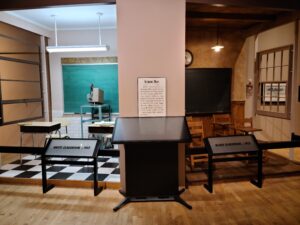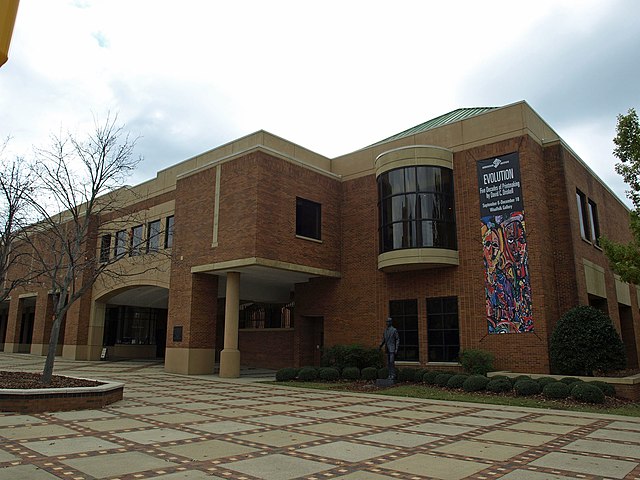by Bryan & Heather
In what is quickly becoming an annual tradition, we spent our Independence Day 2022 weekend at more sober historical reflection, this time paying our first visit to the Birmingham Civil Rights Institute. We had been wanting to go to this museum at the heart of one of the most infamous cities in one of the most infamous states of the American Civil Rights movement for a while, but its slightly odd hours and other plans kept getting in the way. Now, with no further excuses, we were finally able to experience this odd yet ultimately compelling mix of old and new at what one could call one of the epicenters of the struggle for human rights in the second half of the twentieth century.

The Birmingham Civil Rights Institute is nothing if not experiential in its interpretation–a pleasant surprise, given its foundation in the early 1990s. Visitors are conducted through the introductory film’s retracting screen into lengthy exhibit halls filled with life-size or near-scale dioramas that bring the tangible realities of black life and the movement to the fore of your experience. Like the EJI’s Legacy Museum, our July 4th destination last year, actual artifacts are scarce at the BCRI, but the institute more than makes up for it by demonstrating its history through these dioramas. Particularly effective was a side-by-side layout of a black classroom and white classroom from 1954 (the year of Brown v. Board of Education) and a typical black family’s home from the same decade, though even the less-necessary church, barbershop, and bus sets still helped make their history all the more immersive. This approach reaches its climax with the BCRI’s unique power of place late in its galleries. It is not a coincidence that the institute sits across the street from Birmingham’s 16th Street Baptist Church and Kelly Ingram Park–both focal points of the Civil Rights movements that gained national fame (or, in the case of the latter, infamy). Few museums have the opportunity to design entire rooms of interpretation around views of such powerful landmarks, and the BCRI is worth a visit for these exhibits alone.
This is not to say, however, that our experience at the institute was flawless. BCRI suffers from many of the flaws that come with being in operation for three decades. Exhibits’ interpretive text fluctuate between easily readable and painfully small (note to museums everywhere–please do not post the entirety of newspaper articles or legal ordinances in their original font on your walls), and we couldn’t decide whether the former were later efforts at updating exhibits or original redundancies. Bryan also found the layout of the galleries to be haphazard, though Heather found that moving clockwise around any given room alleviated most problems.
These are fairly pedestrian problems, however, and the BCRI is well worth visiting if you find yourself in Birmingham. It continues to uphold our experience of responsible interpretation of America’s Civil Rights Movement even when surrounded by some of the most regressive politics of past decades. Indeed, the BCRI is itself engaged in an admirable amount of general community outreach beyond just the history of its exhibits–a possible reason that it closes at 4 on Saturdays. For any spending time in Birmingham, it is a solid choice for a side trip, especially as we enter an era where museums may be the only source of honest historical interpretation throughout much of the nation.
